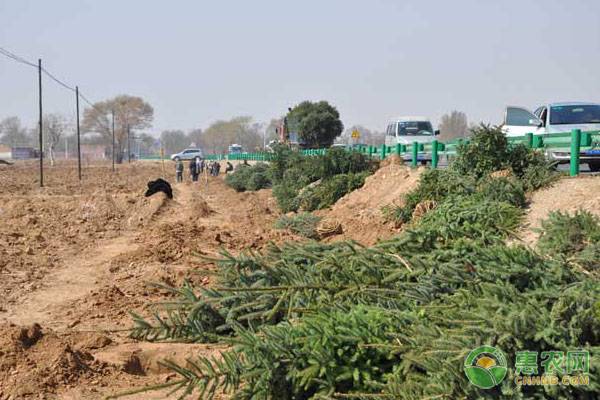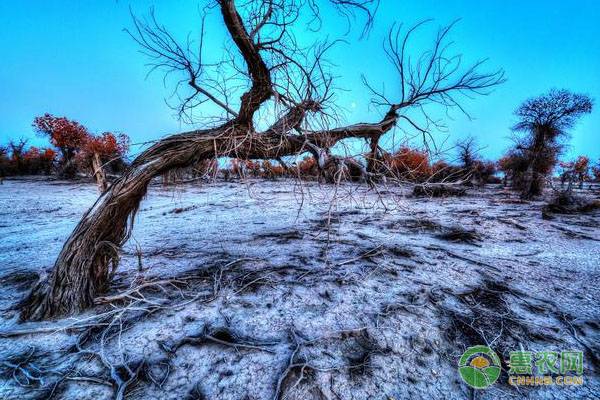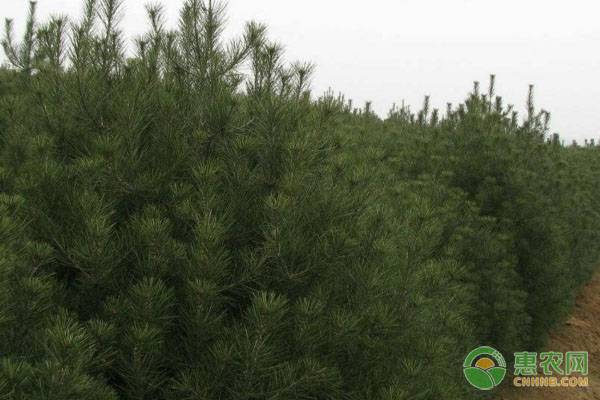Saline-alkali land, also known as saline soil, includes saline soil and alkaline earth. The soil contains high soluble salts. Because the salt content of soil and groundwater is too high, after strong surface evaporation, the salt in the soil rises through the action of the capillary and accumulates on the surface of the soil, forming land salt. Alkalinization. So can you plant seedlings in saline-alkali land? How to manage it? How to maintain it?

Because of the large accumulation of salt in the soil, saline-alkali soils cause a series of soil deterioration problems, such as poor aeration, slow soil temperature rise, strong capillary action, slow nutrient release, structural bonding, poor aerobic microbial activity, and low permeability. Etc., it will also increase the salinization of the surface soil, inhibit the growth and even death of plants. But in fact, saline-alkali land can be used, and scientific planting techniques can be used to plant seedlings.
I. Management techniques for planting saline-alkaline seedlings
1. Seedling planting technology
(1) bare root seedling planting
The planting of bare root seedlings refers to the planting of seedlings without soil mass. This planting method is suitable for tree species with strong vitality such as willow, clove, etc.
1 three buried, two stepping, one mentioning seedlings. Before planting, the hole should be in accordance with the root system. The general hole diameter is 0.6~1.2m and the depth is 0.5~0.6m. When burrowing, place the topsoil and heart soil next to the hole. When planting, place the seedlings in the holes, let the roots stretch naturally. When the topsoil is filled in the middle half, the seedlings will be lifted slightly, and then the roots will be stretched and then stepped on, then Fill the heart and fill the hole, apply the loose soil after stepping on the ground, and finally pour the root water.
2 depth should be appropriate. The depth of planting is 2 to 3 cm deeper than the roots of seedlings. If planted in dry and loose soil or wet and sticky soil, it can be deepened or shallower.
3 can not damage the root bark when planting, if the root bark is damaged, it will cause root infection.
4 roots are in close contact with each other. After planting, the roots are densely connected to the soil to absorb water and facilitate growth. When covering the soil, the clods should be broken, the stones and grass roots should be cleaned, and the soil should be stepped on.
(2) Planting with soil seedlings
It is suitable for seedlings with difficulty in rooting, such as juniper and spruce, which can be applied to urban greening and afforestation. Because the root system of the soil has the original distribution state, it can quickly restore the functions of absorbing water and fertilizer after planting, and has the advantages of high survival rate, quick forestation and quick effect. With soil seedlings to be planted together with soil mass, the depth of planting should be appropriate. Special attention should be paid to the compaction of soil and soil, and the protection of soil masses to avoid damage and timely watering.
2. Selection and configuration of tree species
(1) Polysalt plants: also known as salt-absorbing plants, its osmotic pressure is usually at 40 atmospheres, and can be grown in soils with high salinity such as salt angles. Poly-salt plants have the effect of improving saline-alkali soil.
(2) Salt-salting plants: Salt-salting plants can discharge salt through the secretory glands on the surface of stems and leaves, such as red leaves and strange willows by the sea.
(3) Salt-impermeable plants: These plants usually live in salinized light soil, and their root cells have little permeability to salt and hardly absorb salt.
3. Application of horticultural saline-alkali soil improved fertilizer
The pH value of the horticultural saline-alkali soil improving fertilizer is 5.5, so it can effectively reduce the salt content of the soil and improve the brackish water. The improved saline-alkali land is faced with the problem of improving the simple alkaline soil and improving the alkaline soil. The method of ion exchange can be adopted, and the principle of transforming salt to improve salt soil can be adopted, and the combination of salt and fertilization can be effectively improved, and the saline-alkali land can be effectively improved. Spreading the horticultural saline-alkali soil improver on the ground and then deep-turning 30cm is beneficial to the application of organic fertilizer. Rooting powder also contains a variety of nutrients and rooting agents, which can promote the rooting of plants and promote the growth of garden plants in saline soils.

Second, the maintenance points of saline-alkali seedling planting
In the three years of planting of saline-alkali seedlings, in order to ensure their good growth, the water is pressed and pressed in the spring when returning salt. Weeding and loosening in the case of spring drought, rainfall and irrigation, minimizing the evaporation of water and effectively inhibiting the rise of salt. Strengthen the crown and trim of the seedlings to prevent pests and diseases.
1. Scientific watering
After the seedlings are planted, water is poured once, and then water is irrigated twice every 7 to 10 hours. After watering, pay attention to loosening the soil in time. After the tree is poured 3 times, the tree pool is sealed, which is beneficial to retain water and prevent returning to alkali. .
2. Adding organic fertilizer
Organic fertilizer can improve soil structure, provide nutrients needed for seedling plants, and produce acidic substances to neutralize saline and alkali, effectively improving plant site conditions.
3. Saline-alkali improver
The application of acidic substances in saline and alkali can effectively lower the pH, but the long-term use of the soil will cause the knot. For small areas to change soil, organic acids can be used, which can change the alkali and will not cause the knot.

The above is the management technology and maintenance points of saline-alkali seedling planting. The harm of salt and alkali will limit the planting of seedlings. The traditional method can promote the growth of seedlings, but it restricts the production capacity of saline-alkali land. Therefore, it is necessary to improve and manage the saline-alkali land.
For the wonderful pictures and popular comments on the cultivation of saline-alkaline seedlings, you may be interested in the following recommended contents. Welcome to read.
Burn Dressing,Burn Dressing Gauze,Burn Gel Dressing,Hydrogel For Burns
Roosin Medical Co.,Ltd , https://www.roosinmedical.com